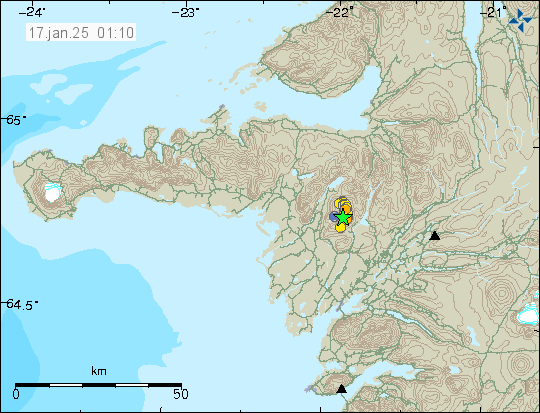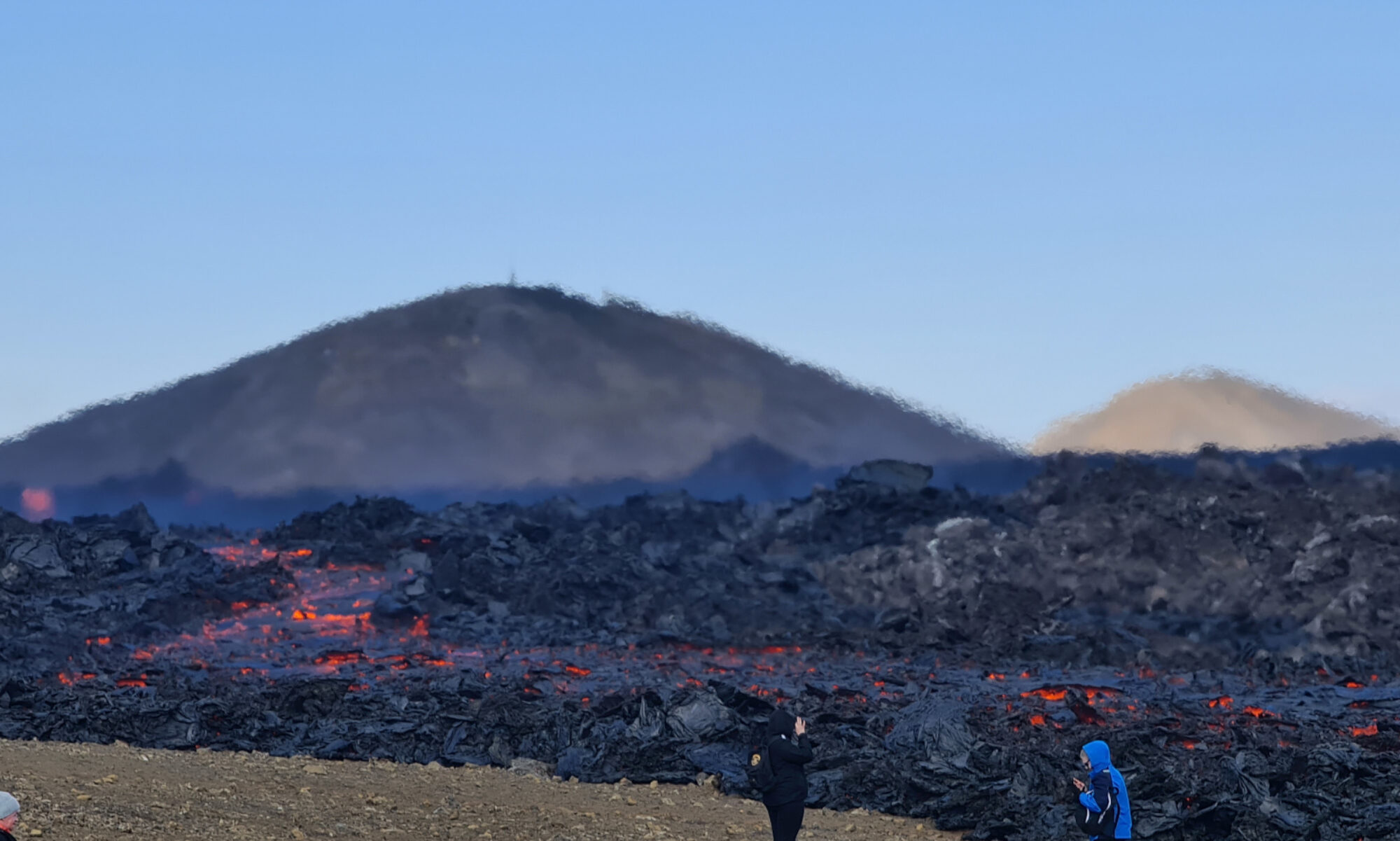Yesterday (16. January 2025) an earthquake swarm started in Ljósufjöll volcano. This is an area that has had an earthquake swarm since 2020 or 2021. Largest earthquake in this swarm had a magnitude of Mw3,2.

This earthquake swarm aligned it self with fault lines in the area. That is a change from earlier earthquake activity. Depth of the earthquake has also been decreasing. Its now around 14 km, from 17 to 23 km as it was before. Based on the earthquake activity, the amount of magma remains low and when the amount of magma is low. Its less likely to erupt. It rather is just stuck in the crust. However, if the amount of magma increases, that is going to increase the chance of an eruption in this area. This might take years, if not decades to happen as it stands now. Quick change seems unlikely at the writing of this article.

Your previous posts dating back years also postulated that because prior eruption events on the Reykjanes peninsula were many thousands of years ago had a low risk of taking place anytime soon. Have you correlated the data as to the rate of change we saw from 2010 to present where dike intrusions actually exponentially accelerated? What is the makeup of the crustal formations and caps that are in place in the area of Ljósufjöll – equal or less density? Equal or more tephra?
I think we need to evaluate more data before saying that we are precisely cautionary to any number or set of years to decades when being on the “safe-side” isn’t practical.
The eruptions that took place in Ljósufjöll volcano in the 9th or 10th century (between the years 800 to 900, or the years between 900 to 1000) where small lava eruptions. That is what historical data says, but it might be incomplete.
The amount of magma pushing towards the surface at current rate is not much. Less magma also results in less pressure on that magma. Making it less likely to erupt.
Until Fagradalsfjall volcano erupted for the first time in 6000 years in the year 2021. There where no clear signs that an eruption was about to happen on Reykjanes peninsula. Those signs started to appear around 2019 at the earliest and where unclear for a while.
Until that time. The experts in Iceland where sure that nothing would happen on Reykjanes peninsula for centuries. I didn’t have the research ability to claim anything different. Since there was no data to suggest otherwise.
To summarize, I think you missed some tell-tell signs that the dike intrusions that became pretty explosive during what we saw lately can tell a lot about next events so long as we understand more about the geological capping where these initial intrusions start.
Bárðarbunga is a great example where we identified crustal formations (after the fact) that showed areas prone to weakness because of linear fracturing that allowed magma to rise quickly despite a heavy cap of rock and ice. The question I prose is about that in the area of Ljósufjöll. If we look at the geological data in that vicinity alongside the seismic dike influenece, where is there likely an area nearby where the stress ‘could’ relieve itself without transference into another channel?
I’m mostly interested becuase Reykjanes seemed dormant outside of the offshore and undersea area. It, however, definitely found a weakness to take advantage of very close by.
No. I did not. The long term signs are often none and if they appear, they can only be discovered afterwards.
Bárðarbunga volcano eruption in 2014 to 2015 resulted in a caldera collapse (https://www.nasa.gov/science-research/earth-science/caldera-collapse-increases-the-size-and-duration-of-volcanic-eruptions/). It lowered the caldera floor by 65 meters. It has today only risen about 25 meters and that means there are still around 39 to 40 meters to reach the 2014 inflation levels.
The geology settings in Bárðarbunga volcano makes it very difficult for magma to break a path to start an eruption. Since certain pressure levels have to be reached. Eruptions to the side are not unknown when it comes to Bárðarbunga volcano. The eruption in Gjálp in 1996 (https://en.wikipedia.org/wiki/1996_eruption_of_Gj%C3%A1lp) was one of them (maybe, the science is unclear).
What happened in Bárðarbunga volcano on 14th January 2025 was not expected. There had been some increase in earthquake activity the weeks before, but this type of activity pulse in earthquake activity has been observed before and nothing happened.
The dyke propagation stopped because the pressure was not enough to break through the crust. That is going to result in pressure continue to build up until it can break through the weak spot it created (maybe) later on.
If an eruption happens in Bárðarbunga volcano soon. I am expecting to go towards Tungnafellsjökull volcano. That volcano has never erupted in last 1000 years, maybe never in the last 10.000 years. The data is unclear. If that happens, it might start an eruption in Tungnafellsjökull volcano.